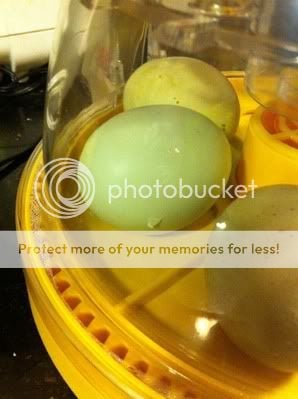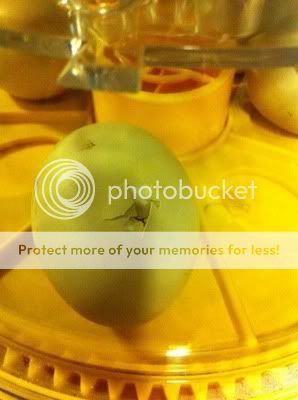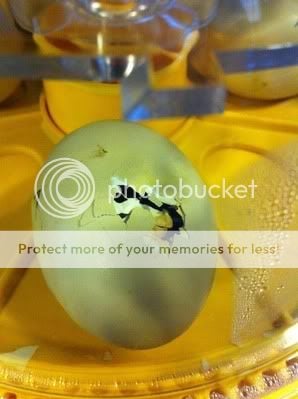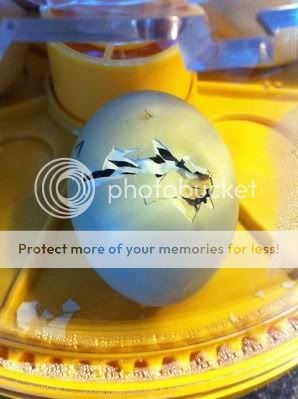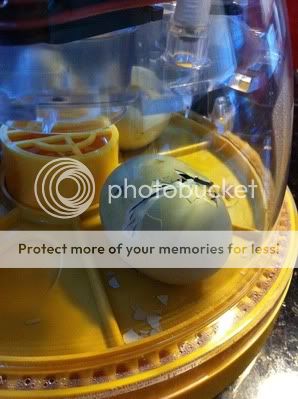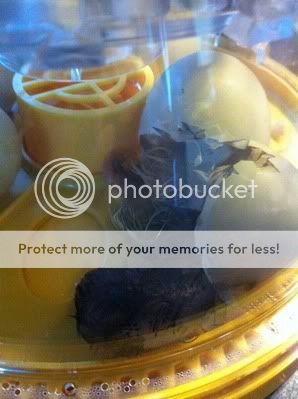The hatching process can really agonize us. When a chick hatches, it goes through three distinct phases, internal pip, external pip, and zipping. During this process it has to absorb the yolk, dry up blood vessels it does not need anymore, convert to breathing air instead of living in a liquid world, and go through who knows how many other changes. It is not just setting there resting. It is working hard.
Some do most of this stuff between internal pip and external pip. These are the ones that hatch out pretty quickly after the external pip. Some do most of this after external pip. These are the ones that drive us crazy waiting on them. I have not had it go this long, but some people report waiting over 24 hours for this phase and they still hatch on their own. A few have not totally finished all the preparation when they zip, but most of even these make it OK.
Some chicks don't make it through this process. For many different reasons, they can die, not all due to humidity issues. But some do get shrink-wrapped. This can be a little hard to recognize, especially if you don't have experience with it. It is hard to determine when to help. If you help too soon and it has not prepared itself for the outside world, you can wind up killing it. If you wait too late, it can die. Some people go by how the membrane looks. If it looks dry, they help. If you see a yellow foam start leaking out, it is now or never. They don't all leak that yellow foam, but several do.
I don't know how accurate your hygrometer is, but 63% is not all that bad. Some people target that range, but I like to be a little higher. We all use different hunmidities because different humidities work better for some of us than others. I target 65% to 75%, but after the hatch starts, humidity often goes up to 85% to 90%. For me, that means it is looking good. It is possible that chick got shrink wrapped, but not really likely at 63%. And even if it is shrink wrapped, it should not have died that quickly from being shrink wrapped if it managed to break through the inner membrane. There are so many things that could have happened that I can only guess. One of the major things that could have happened is that it is absorbing the yolk and drying up blood vessels.
You should not open the incubator during the hatch. You can shrink wrap chicks that have pipped. But I do what I have to do. I have shrink wrapped a chick by opening the incubator, but I did not shrink wrap all of them. And I don't always shrink wrap any of them. You take a risk when you open it, but you do not guarantee that you will shrink wrap all of them. If you do open it, don't worry about heat loss. The incubator should recover long before any damage is done there. Humidity loss is the issue. Some incubators recover humidity faster than others, some of us have a higher humidity in the roomn than others. How long it is open is important. When you open it, you can possibly mist warm water in there as you close it to get the humidity back up or add warm water to the reservoir, depending on what type of incubator you have. You do not want to use hot water. Those insulated incubators don't shed excess heat very well and you can cause a temperature spike if you use much hot water. Use water just a little warmer than incubator temperatures to help recovery.
With all this, there is a pretty good chance you will not need to intervene. Odds are patience is your best friend right now. But maybe you are a little better preopared just in case.
Good luck! It is a stressful time but usually ends up being a happy time.





